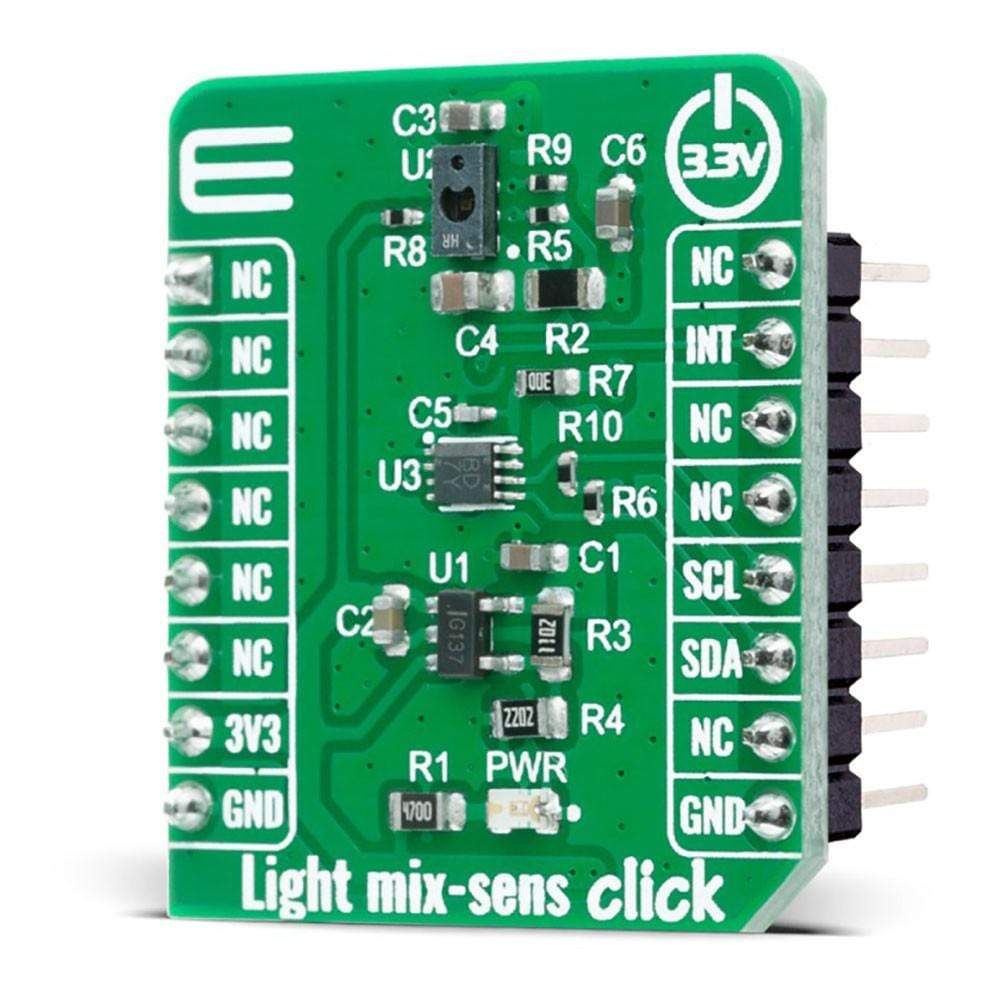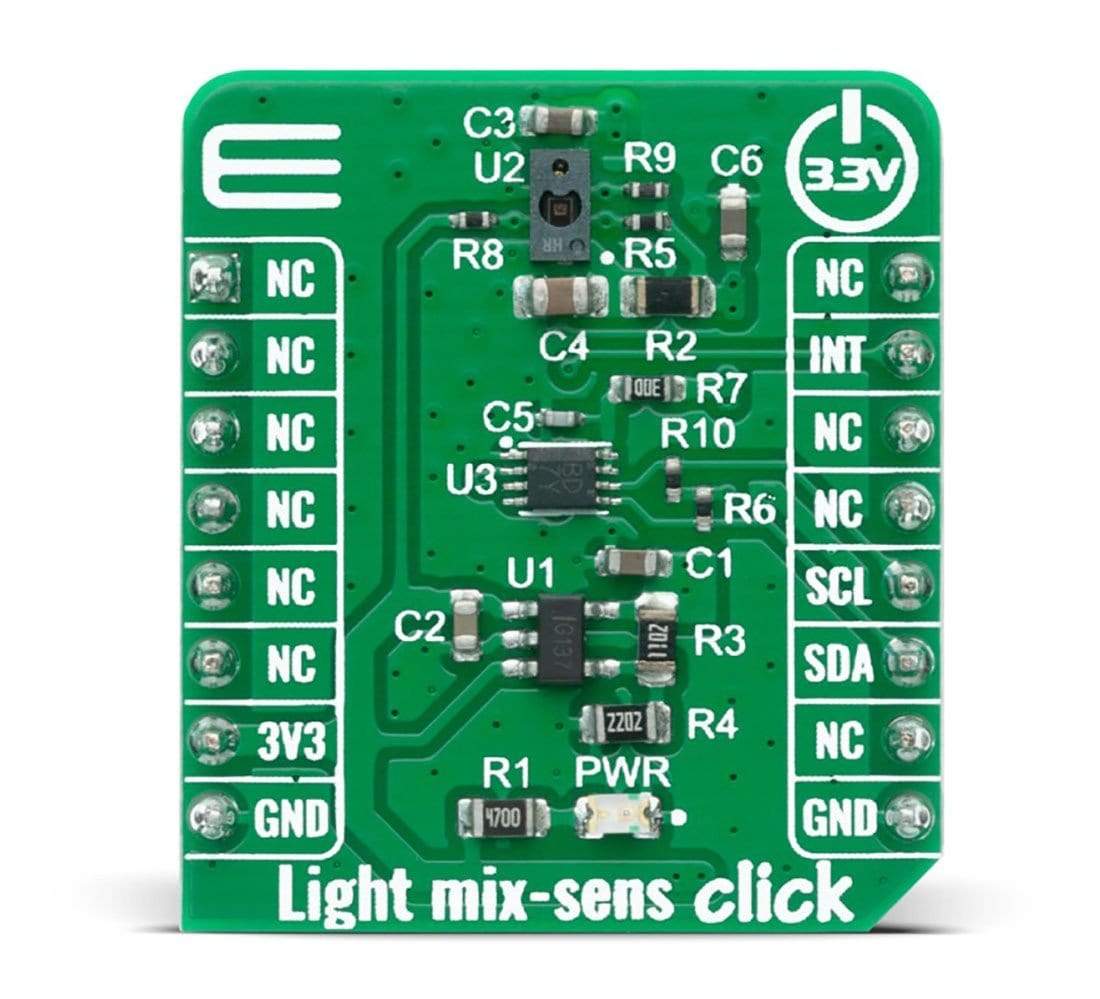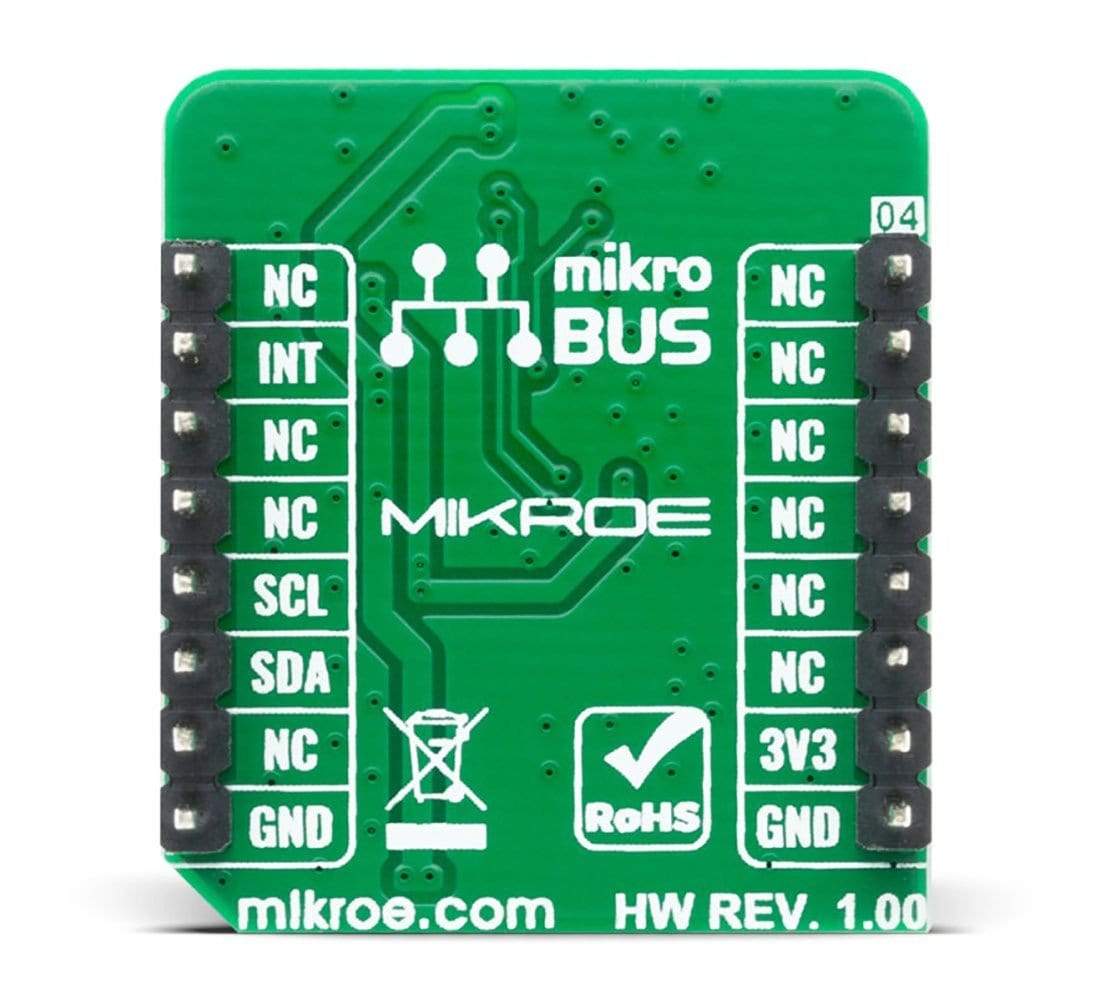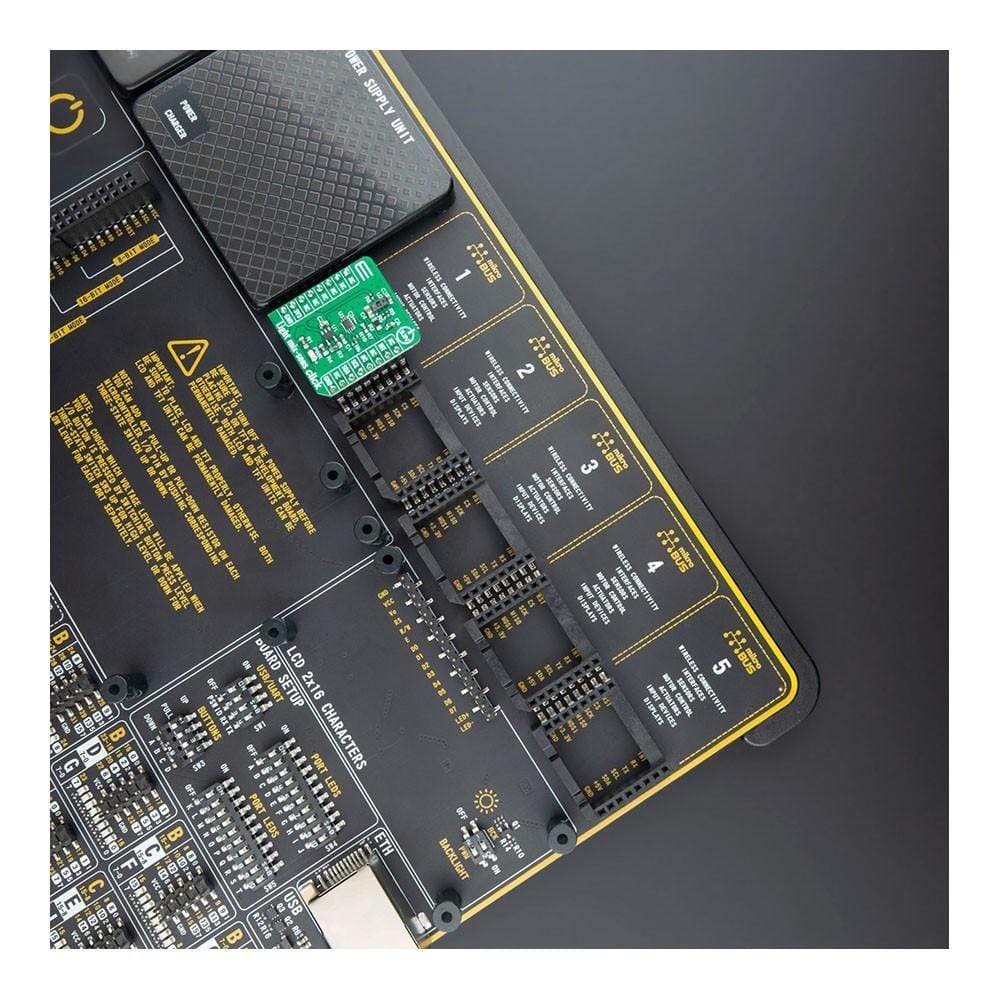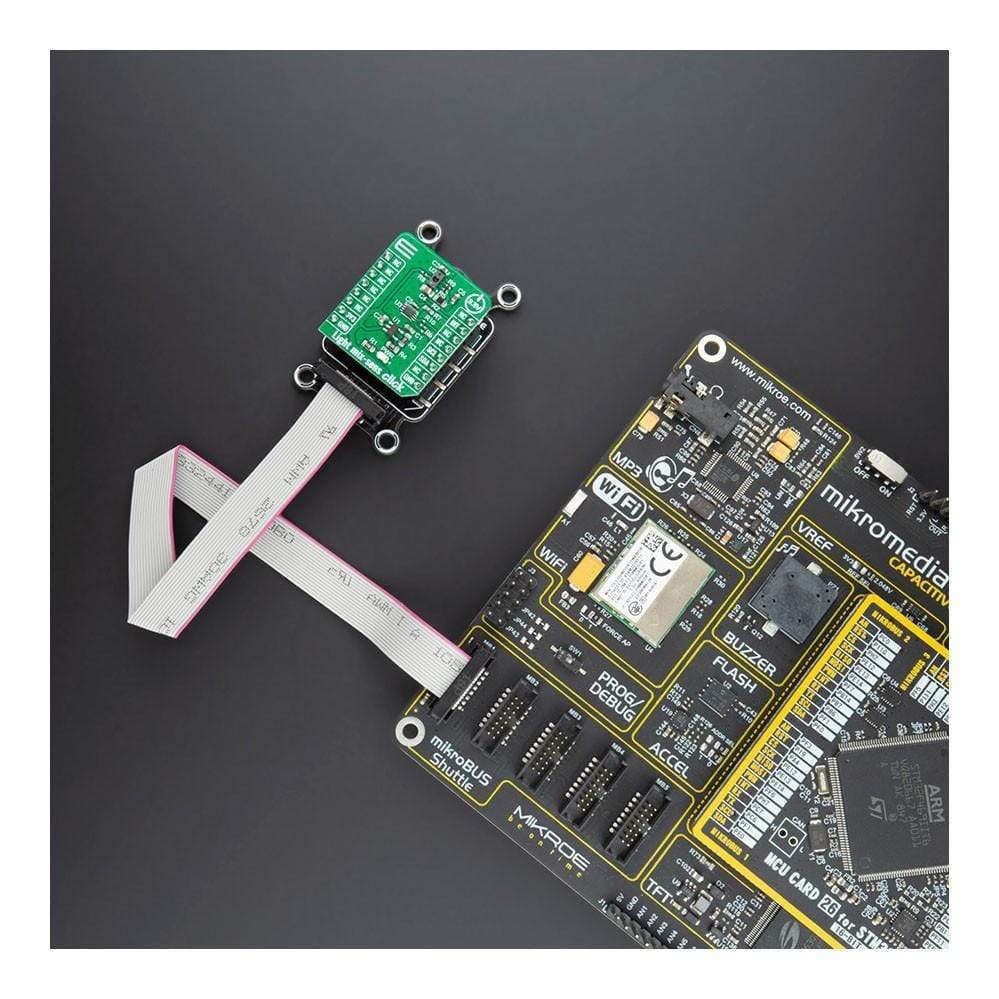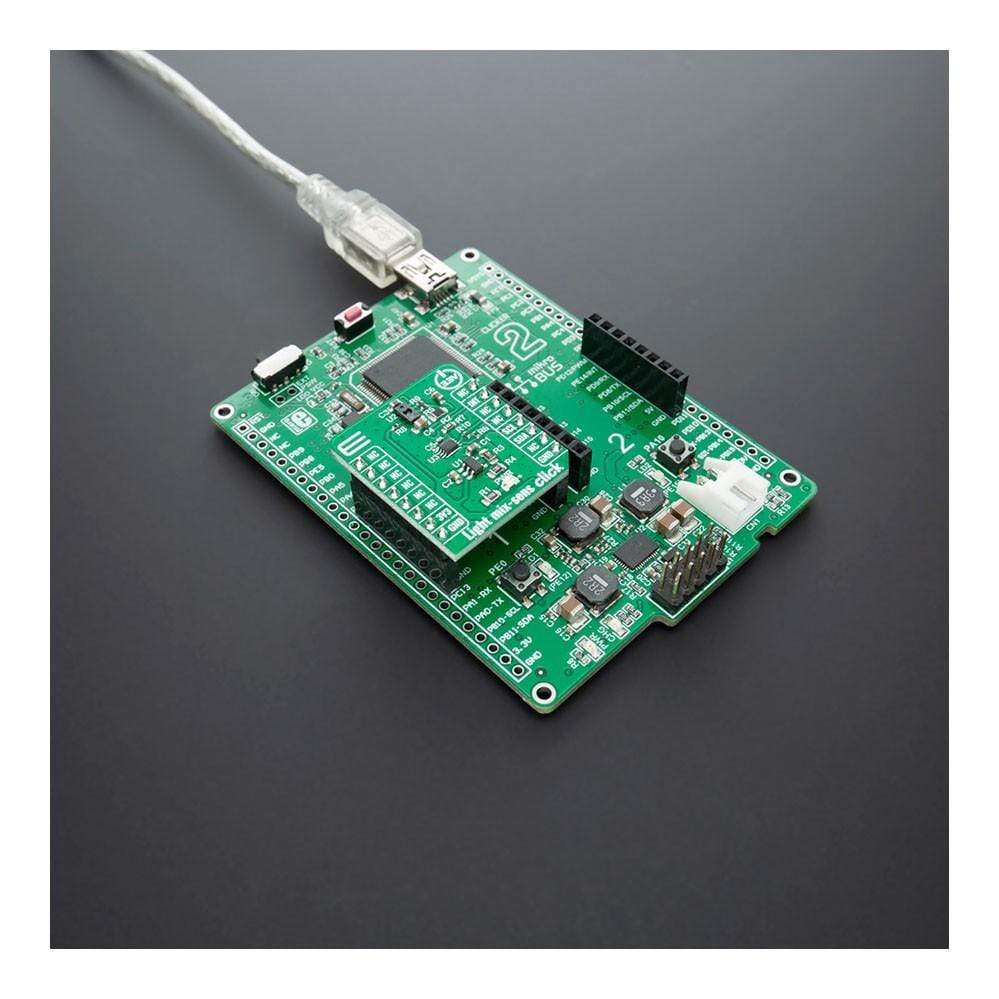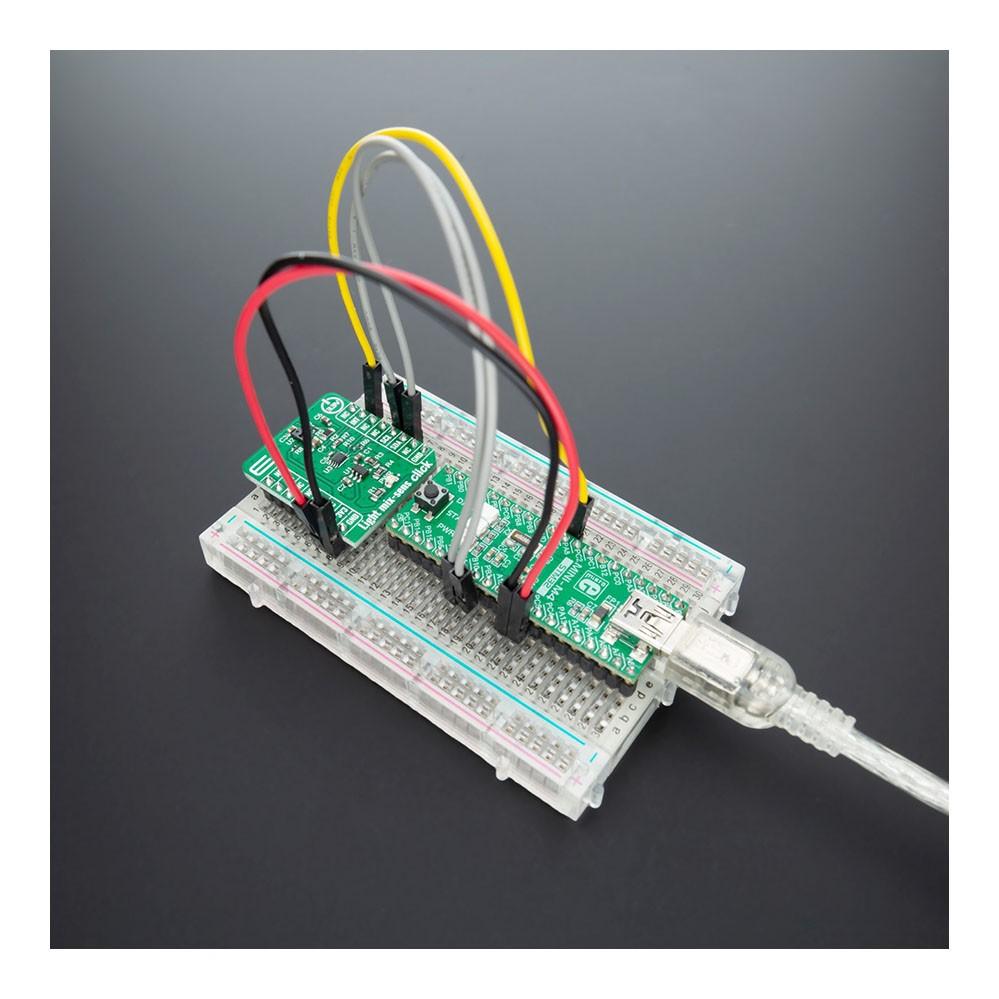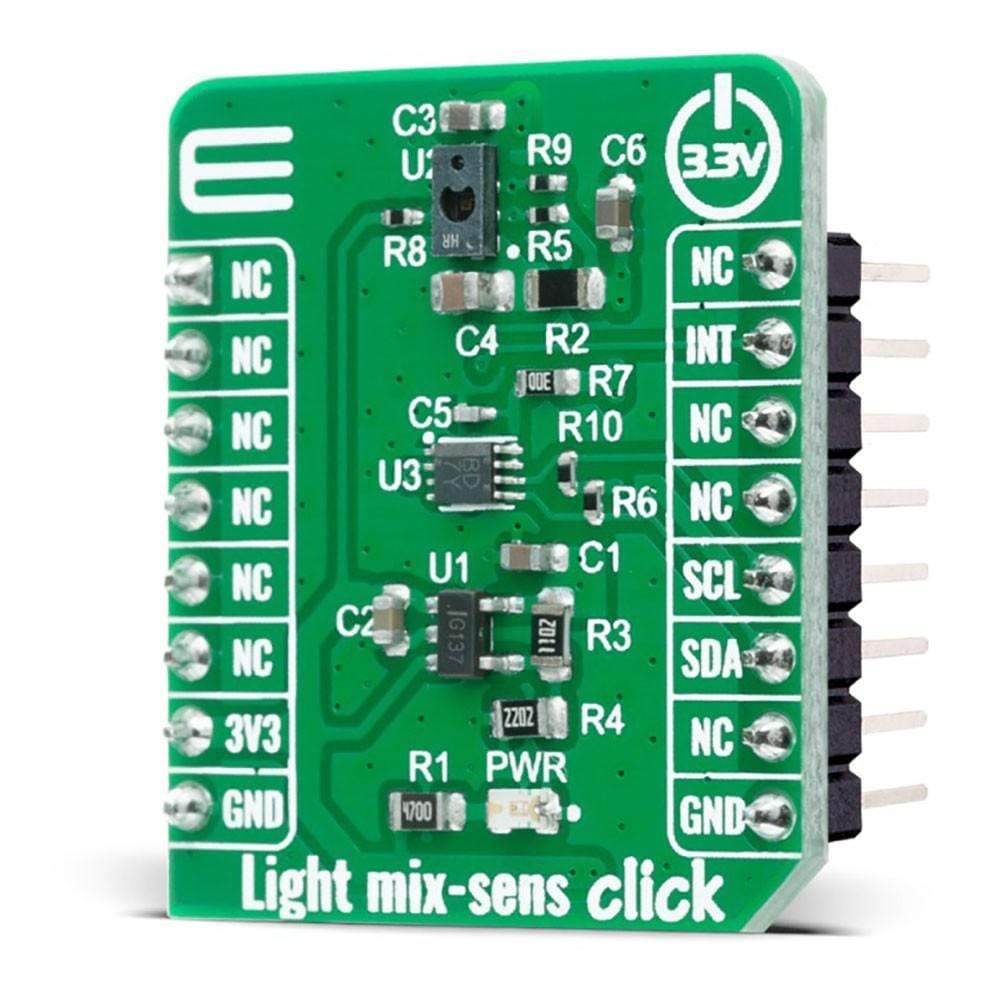
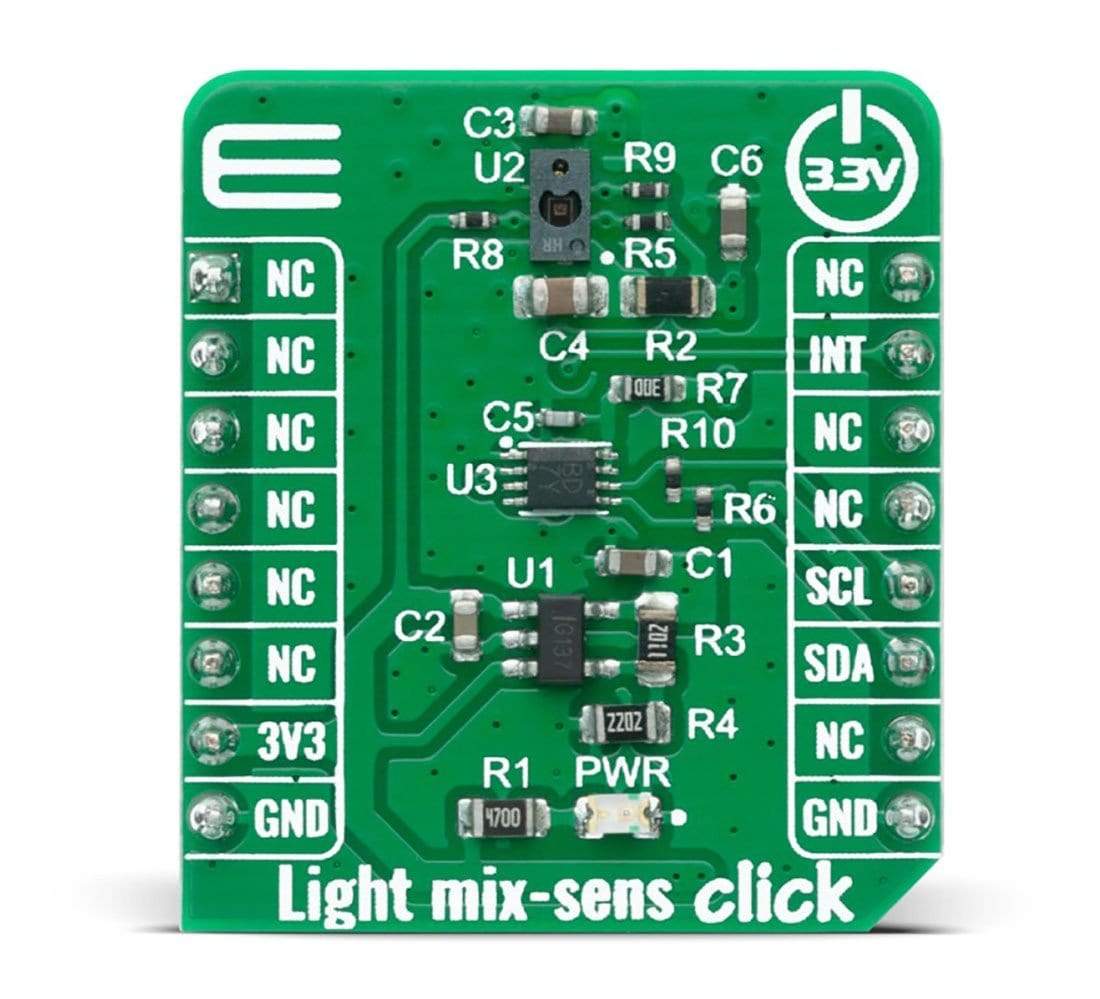
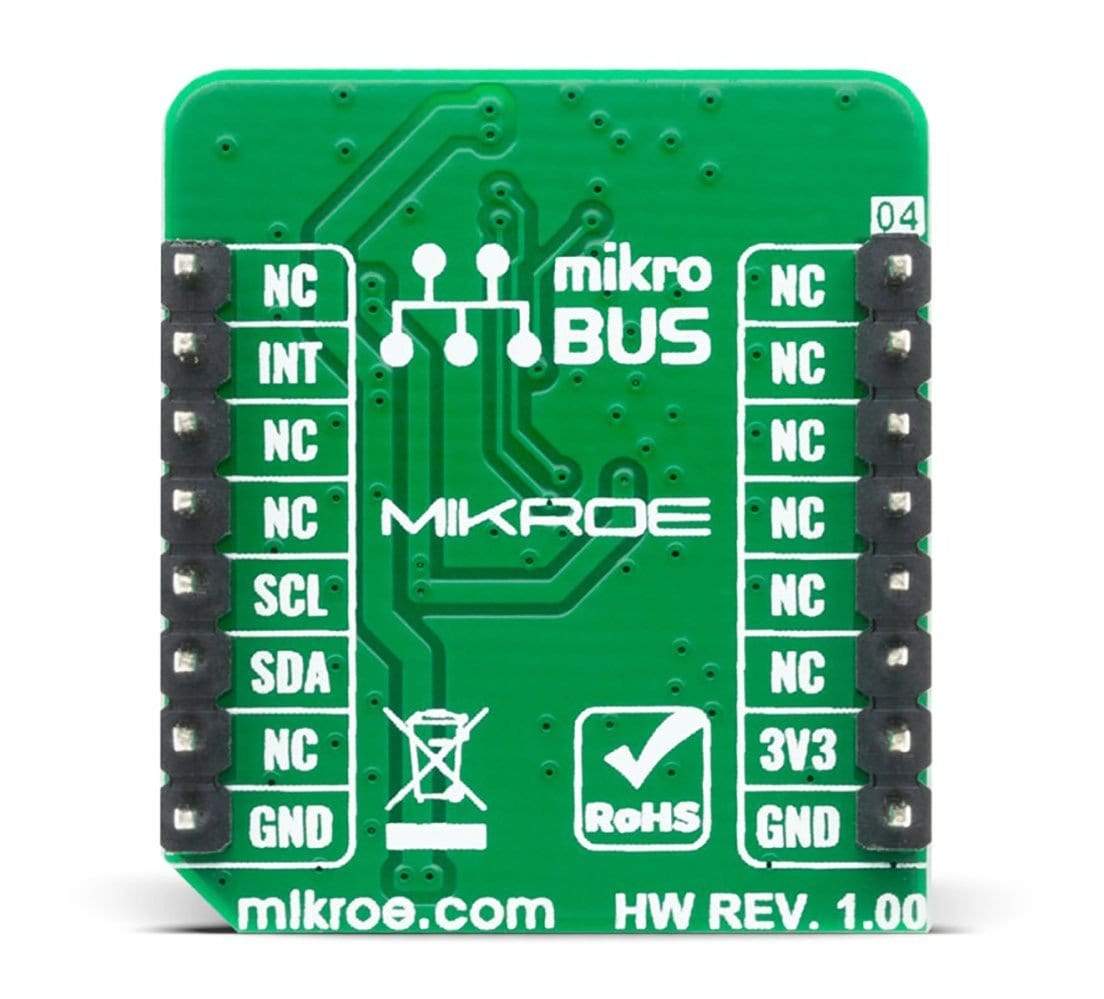
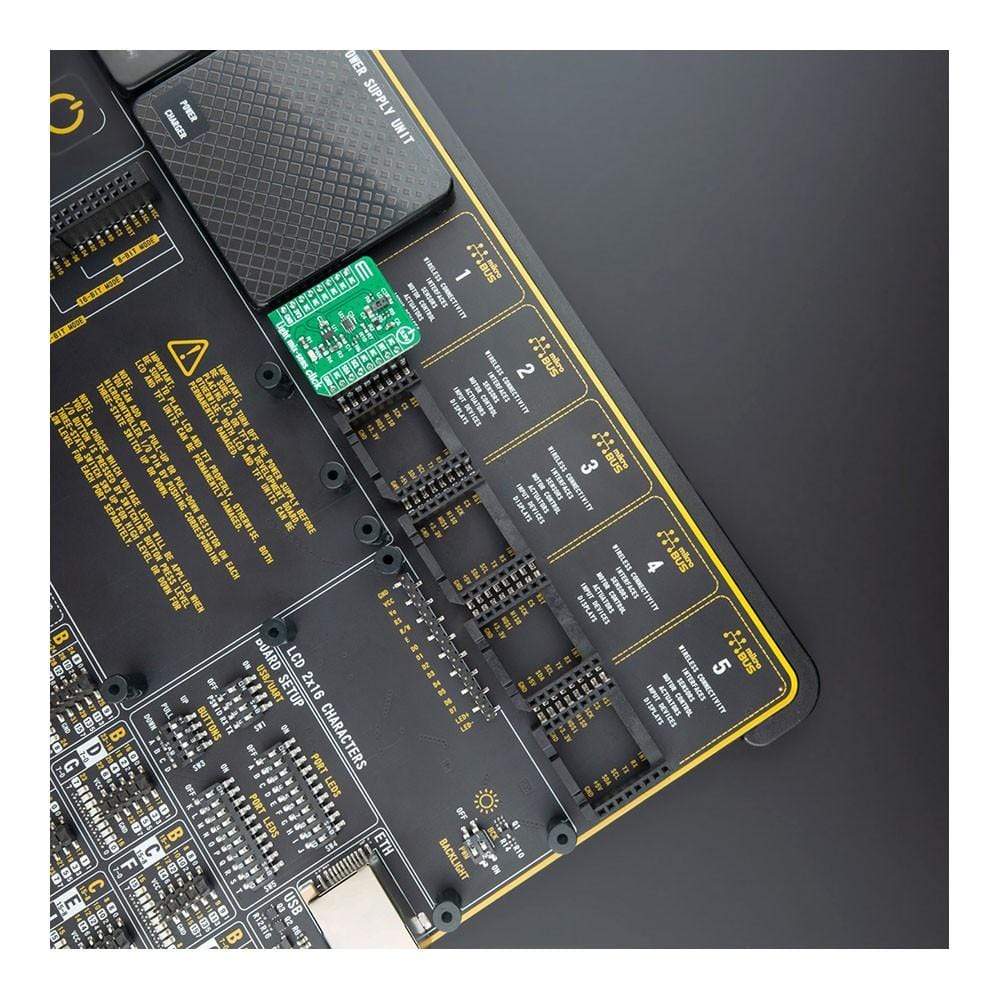
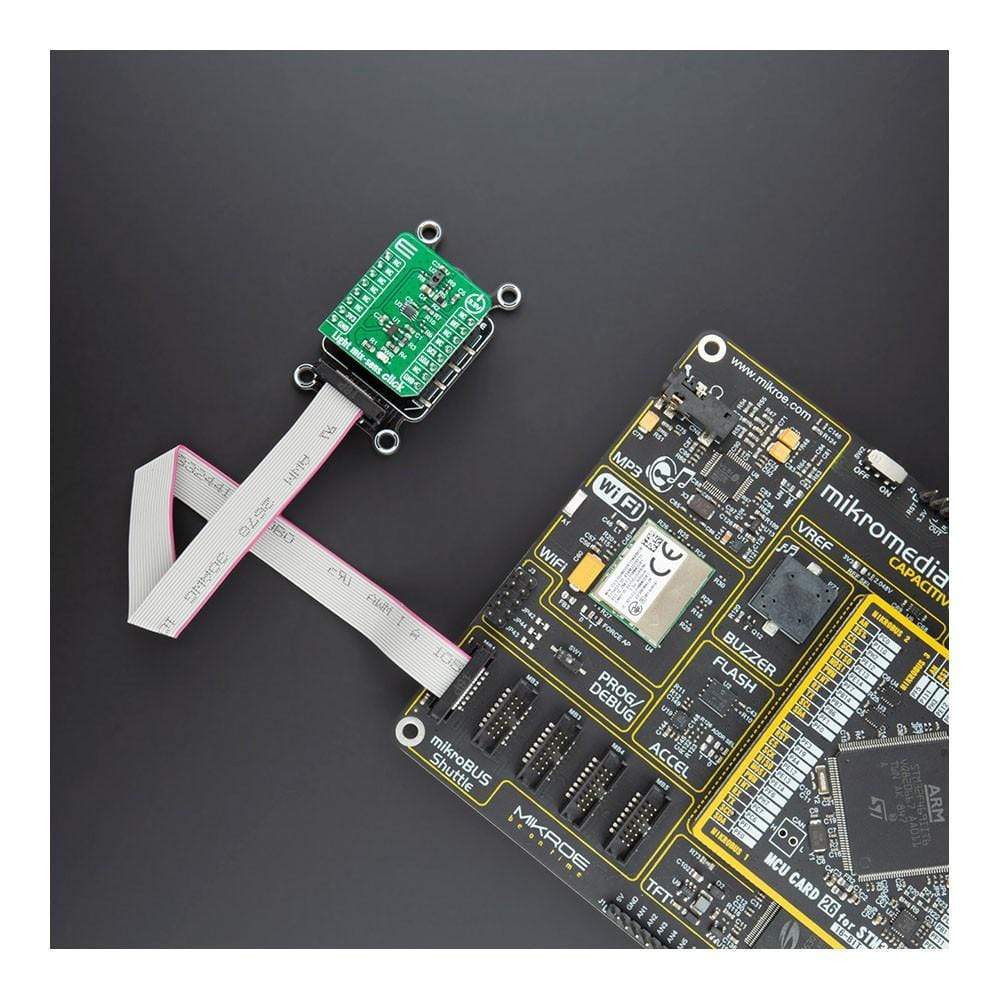
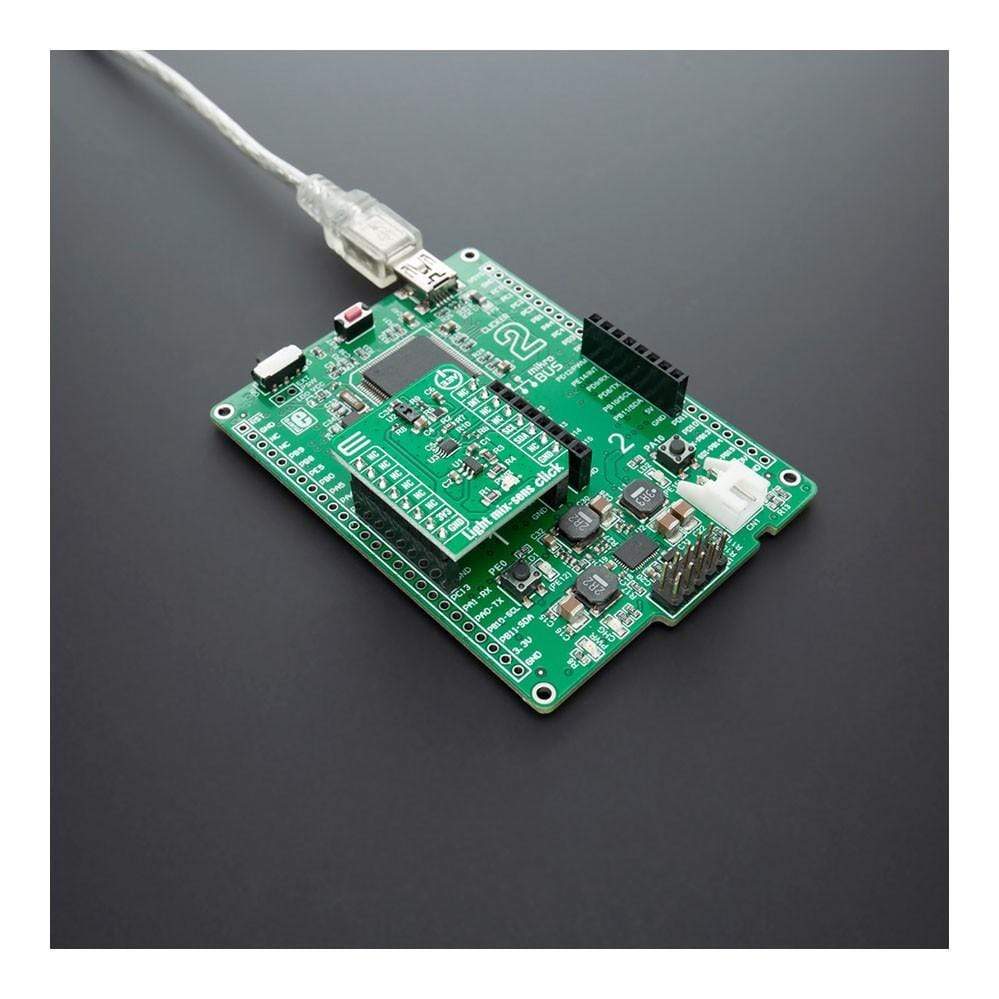
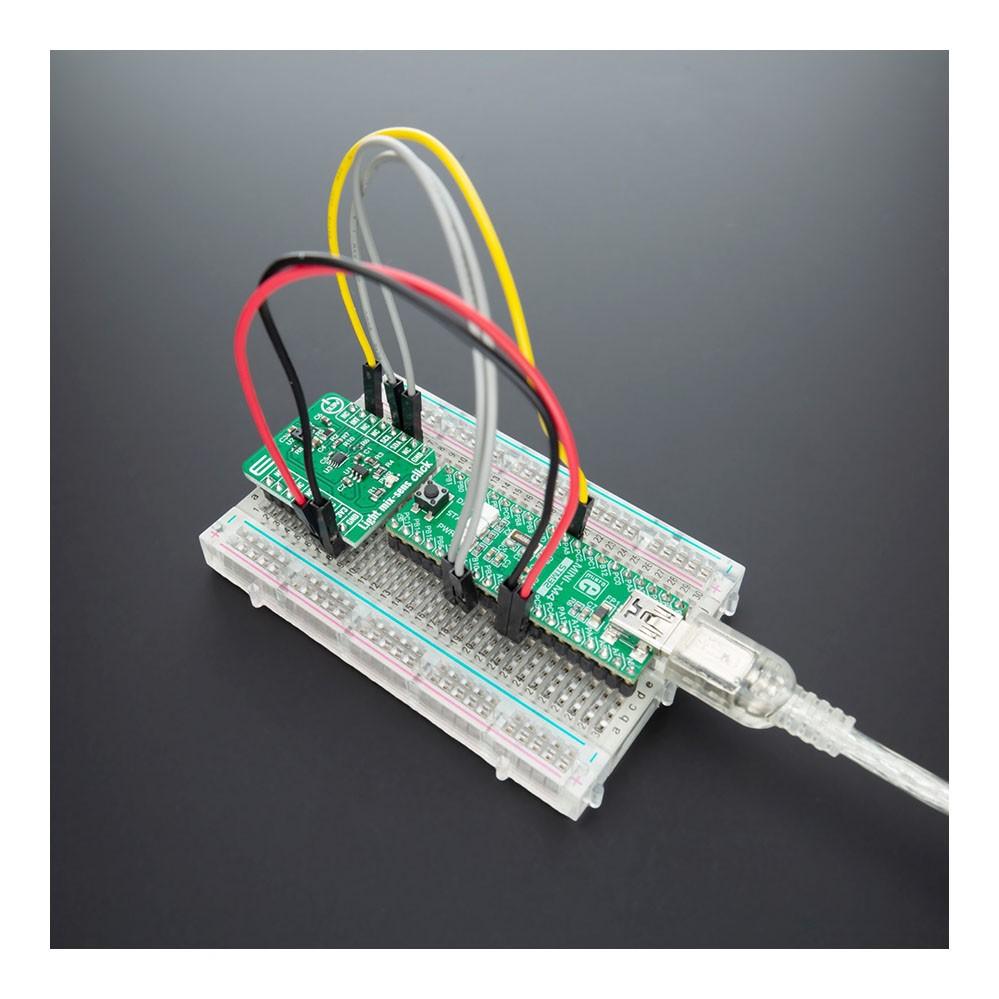
Overview
The Light Mix-Sens Click Board™ is based on the TMD37253, an advanced proximity measurement, colour sense (RGBC+IR), and digital ambient light sensing (ALS) device. The TMD37253 slim module package has been designed to accommodate a “single hole” aperture approach incorporating an IR LED and factory-calibrated LED driver.
The proximity detection feature provides object detection (e.g., mobile device screen to the user’s ear) by photodiode detection of reflected IR energy (sourced by the integrated LED). The ALS detection feature provides photopic light intensity data. The colour photo-diodes have UV and IR blocking filters and dedicated data converters producing 16-bit data. This architecture allows applications to accurately measure ambient light, enabling devices to calculate illuminance and colour temperature to control display backlight and chromaticity.
The Light Mix-Sens Click Board™ is supported by a mikroSDK compliant library, which includes functions that simplify software development. This Click Board™ comes as a thoroughly tested product, ready to be used on a system equipped with the mikroBUS™ socket.
Downloads
Das Light Mix-Sens Click Board ™ basiert auf dem TMD37253, einem fortschrittlichen Gerät zur Näherungsmessung, Farberkennung (RGBC+IR) und digitalen Umgebungslichterkennung (ALS). Das schlanke Modulpaket TMD37253 wurde für eine „Einzelloch“-Blendenkonstruktion mit einer IR-LED und einem werkseitig kalibrierten LED-Treiber entwickelt.
Die Annäherungserkennungsfunktion ermöglicht die Objekterkennung (z. B. Bildschirm eines Mobilgeräts am Ohr des Benutzers) durch Photodiodenerkennung der reflektierten IR-Energie (von der integrierten LED erzeugt). Die ALS-Erkennungsfunktion liefert Daten zur photopischen Lichtintensität. Die Farbphotodioden verfügen über UV- und IR-Sperrfilter und dedizierte Datenkonverter, die 16-Bit-Daten erzeugen. Diese Architektur ermöglicht Anwendungen die genaue Messung des Umgebungslichts, sodass Geräte Beleuchtungsstärke und Farbtemperatur berechnen können, um die Hintergrundbeleuchtung und Farbart des Displays zu steuern.
Der Light Mix-Sens Click Board™ wird von einer mikroSDK-kompatiblen Bibliothek unterstützt, die Funktionen enthält, die die Softwareentwicklung vereinfachen. Dieses Click Board™ ist ein gründlich getestetes Produkt und kann auf einem System verwendet werden, das mit der mikroBUS™-Buchse ausgestattet ist.
| General Information | |
|---|---|
Part Number (SKU) |
MIKROE-4148
|
Manufacturer |
|
| Physical and Mechanical | |
Weight |
0.015 kg
|
| Other | |
Country of Origin |
|
HS Code Customs Tariff code
|
|
EAN |
8606018717927
|
Warranty |
|
Frequently Asked Questions
Have a Question?
Be the first to ask a question about this.

